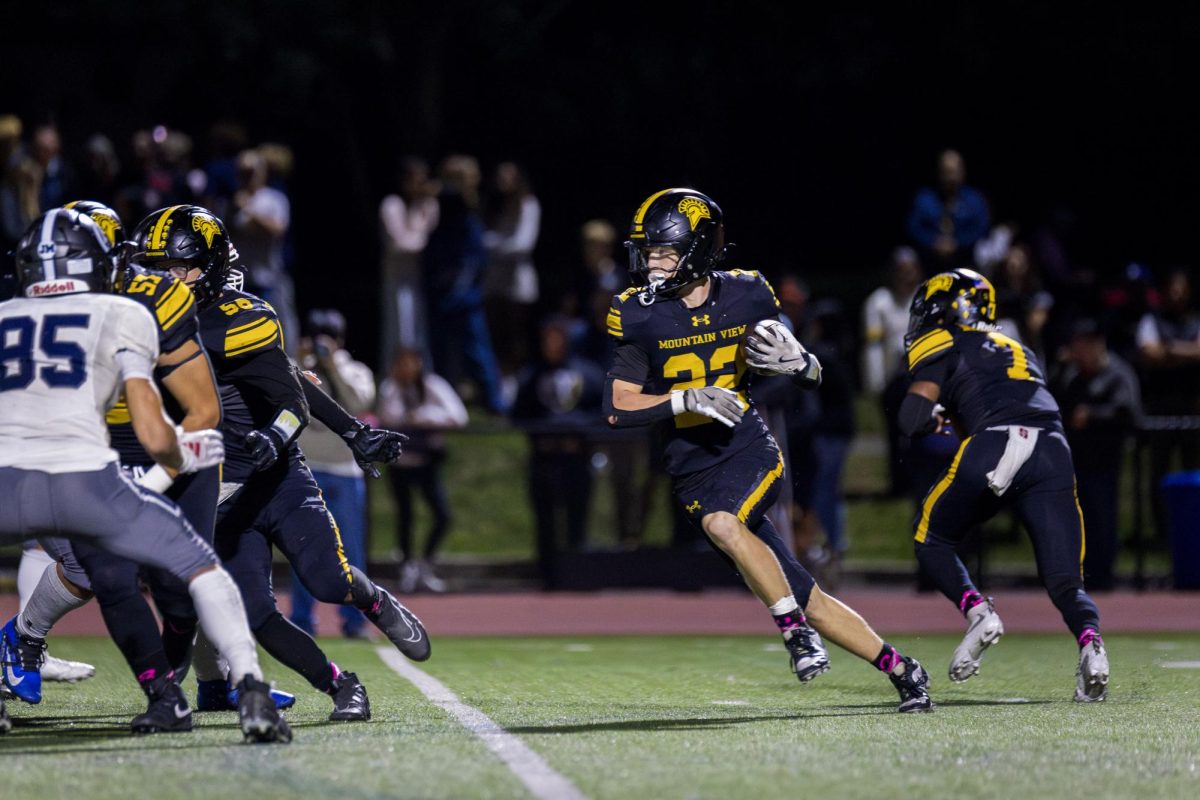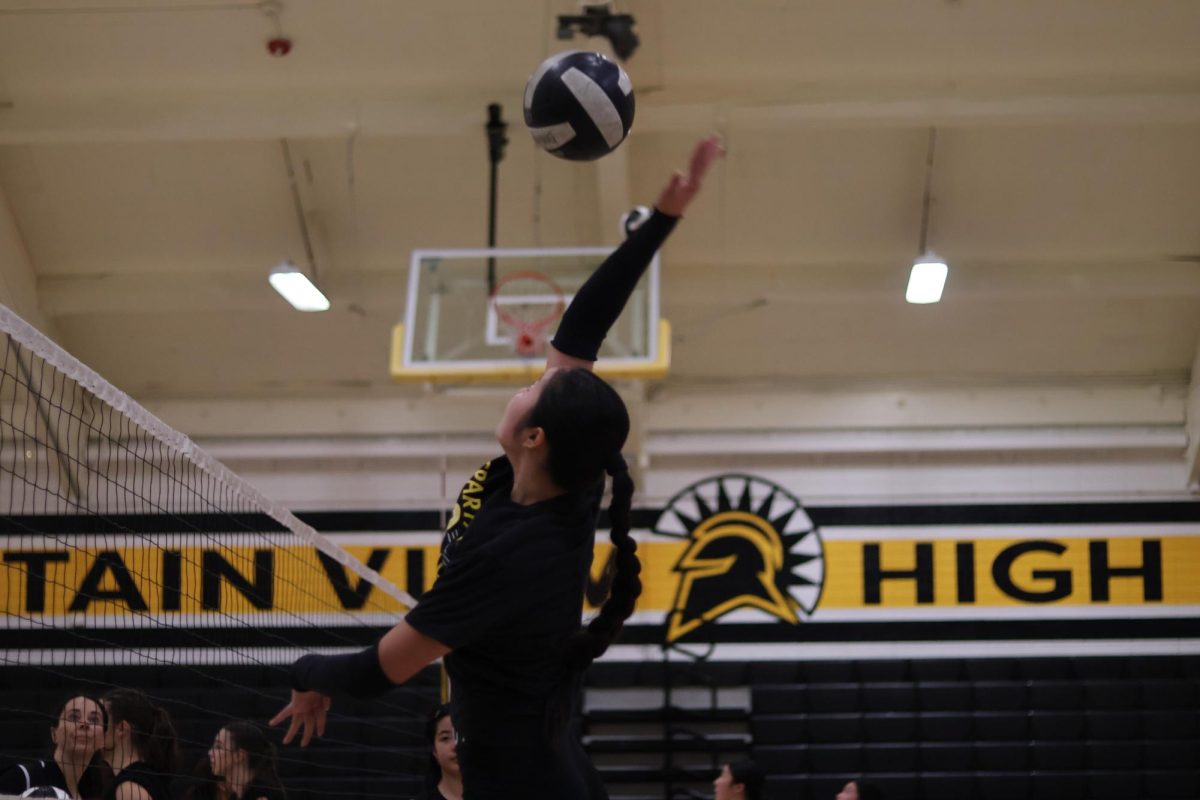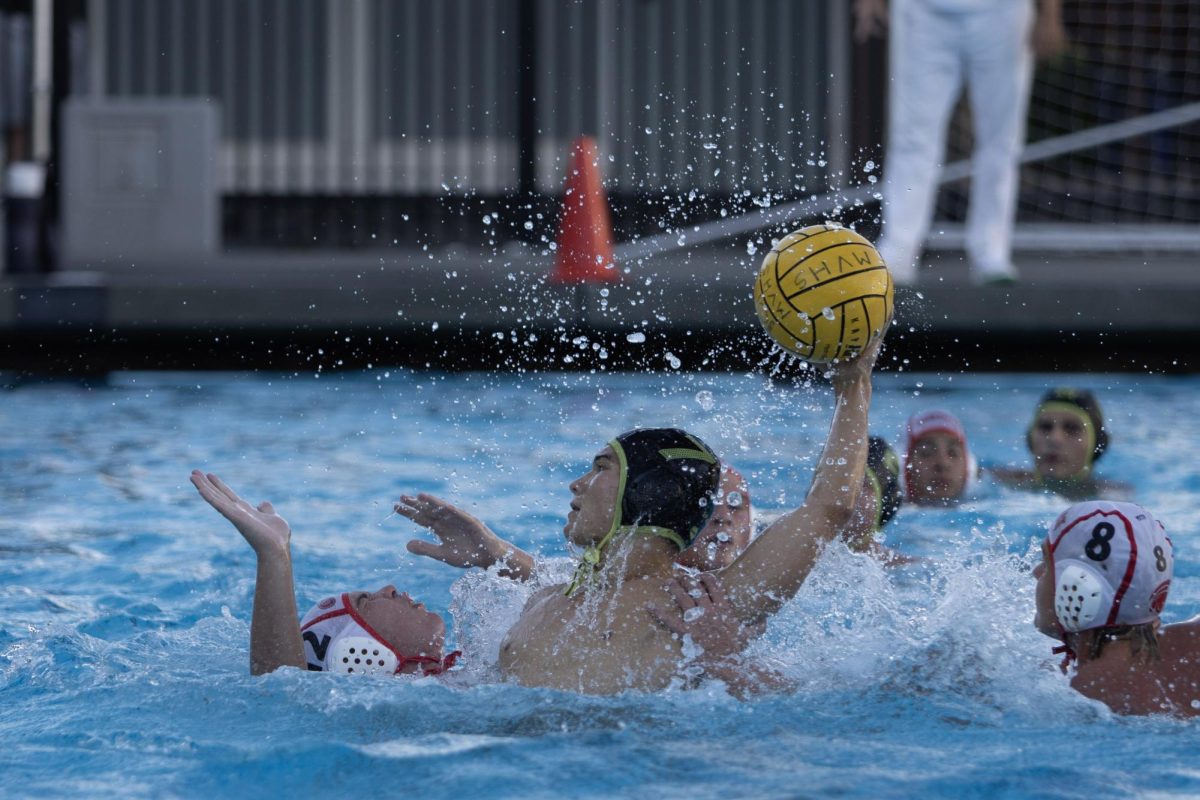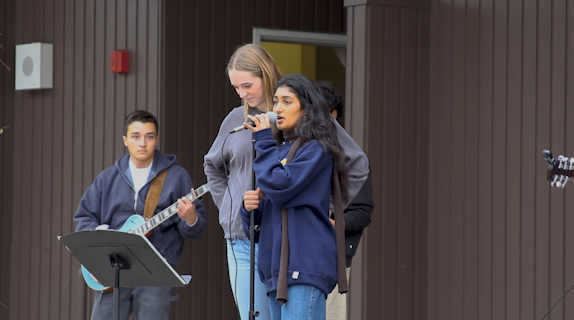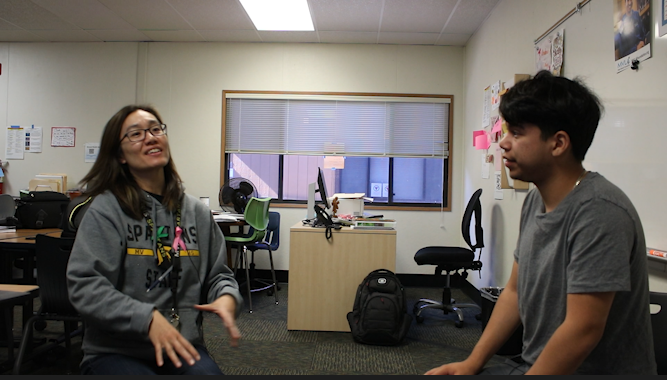As students return to classrooms, they have been greeted by rows of numbered fabric pockets hung up on walls, ready to stow away their phones for the remainder of class.
Students have reported increased usage of phone pockets in their classrooms as teachers seek to reduce distractions from electronic devices. Respondents to a survey posted on the Oracle Instagram account overwhelmingly said that they had more classes with phone pockets this year than last – 68% of respondents said they had more, while 10% said less and 21% said the same.
Still, the majority of classes do not use phone cubbies or pockets. 57% of respondents to the survey said 1-2 of their classes used phone pockets, followed by 27% who said 3-4, 11% who said none, and 5% who said five or more.
At MVHS, phones and electronic devices are not allowed to be used in class without teacher permission, according to the Parent/Student Handbook.
“Cell phones are a huge distraction,” Assistant Principal Marti McGuirk said. “[Phones] can really impede students ability to focus and to learn.”
English teacher Jeanette Craff uses a box near the door that students are required to put their phones into at the beginning of class.
“You can see more focus [without phones],” Craff said. She emphasized the importance of being able to focus both inside and outside of class without being consumed by a phone. “[Students] need to learn those skills, especially in a time when those devices are so readily available and so easily distracting.”
History teacher Felicia Hancock uses a wooden box at the front of her room that students slide their phones into before class. Previously, she said she used plastic boxes placed at table groups, but switched to her current system to ensure student cooperation.
“It just keeps the temptation out of their hands,” Hancock said. She added that students can occasionally use phones to listen to music while they’re working, but only if they get permission.
Even when phone cubbies are used, students and teachers said that other devices are common distractors. Hancock said that students in her class use computers to take notes, which sometimes leads to them going off task.
“You can do almost everything you’re doing on your phone on your laptop,” Hancock said. “On campus and in classrooms, we have to also address the device [problem], because [phones] are only part of the problem. The distraction is there all the time.”
If caught using a phone when not permitted in class, students can have their phone taken to the office, according to the Parent/Student Handbook. However, it’s a practice that doesn’t happen often, McGuirk said.
“I would say maybe one [phone] per month [gets taken to the office],” McGuirk, who supervises the senior class, said. She added that she only knew how many were taken from seniors, and other classes could vary. “It’s not a huge issue.”
Phone seizures used to be a much more common occurrence, McGuirk said. Three years ago, she received phones “every other week, if not every week.” She said she partly credits the change to teachers installing cubbies or caddies to keep students’ phones away from them.
“The fact that more and more teachers have cubbies or caddies or charging stations helps [limiting phone usage] be more proactive,” McGuirk said. “I think that has helped diminish [phone usage] a lot.”
Nationally, phone bans are growing in popularity and implementation. Three states passed legislation banning phone usage in class, while another 10 incentivize, encourage, or require school districts to limit cell phone usage, according to Education Week.
On Aug. 27, the Phone Free Schools Act was passed by the California State Senate, sending it to Governor Gavin Newsom, who is expected to sign it. The bill requires school districts to enact and enforce a policy to ban or limit phones in school by 2026, citing low academic performance, cyberbullying, and mental health issues as reasons for the ban.
McGuirk said there were no current plans to introduce a stricter phone policy, though did not discount the possibility of future changes, especially given possible legislation changes.
“Giving teachers autonomy and control and ownership helps them figure out… what’s going to work best for them from a classroom management standpoint [and] from an instructional standpoint,” McGuirk said.







